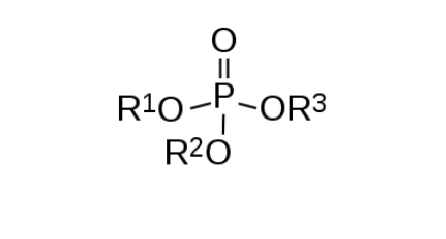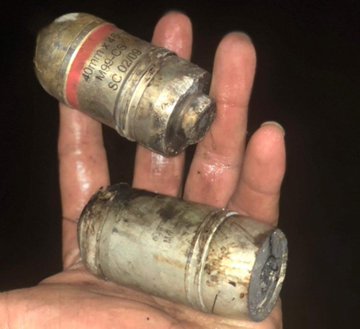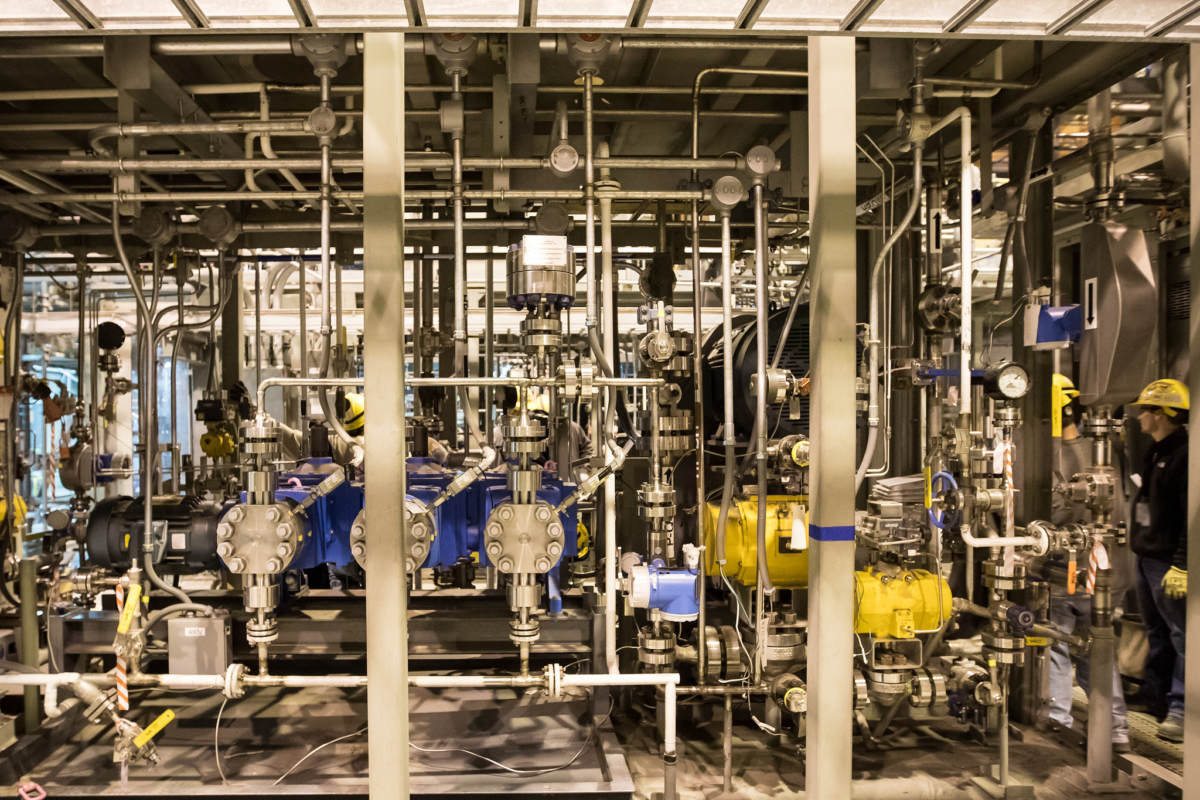Nerve Agents: What are they?
The former Russian intelligence officer Sergei Skripal and his daughter have been deliberately poisoned, in an apparent act of chemical terrorism. This poisoning occurred in Salisbury, in the UK, on Sunday 4 March 2018. It has recently been disclosed that this particular act involved the use of a “nerve agent”. Already, there are numerous examples of misuse of basic technical terms. The purpose of this post is to provide an overview of nerve agents and the terminology related to them.
Poisons and the nervous system
There are numerous types of chemical and biological substances that can affect the human nervous system. Some might be tempted to apply the phrase “nerve agent” to any of them. However, this is not consistent with established definitions and usage. The human nervous system is complex, and there are many complicated mechanisms by which toxic substances of either natural or artificial origin could cause damage to the human nervous system. For example, nature is full of “neurotoxins” such as tetrodotoxin (found in some fish, like puffer fish), botulinum toxin, and conotoxin (found in shellfish).
It should be be noted that the word toxin has a specific definition which is often abused. When used on its own, the word toxin means a poison or venom of natural origin, such as plants, microbes, snakes, etc. When conjoined with other words like cyto- or neuro- the meaning is sometimes extended to include substances not of plant or animal origin. For example, the metal lead is considered a neurotoxin, even though it is not produced by a plant or animal
What are “nerve agents”
Nerve agents are a specific family of chemicals. The term “nerve agent” has specific definitions in military, scientific, and medical literature and the so-called “nerve agents” are a subset of the broader category that we could broadly call “bad things that affect the nervous system.” The reference documents that I have checked all consistently define “nerve agents” as chemicals that interfere with the normal operations of the chemicals acetylcholine and acetylcholinesterase in the human nervous system. Some sources go as far as to restrict the definition to chemicals in the organophosphate family. However, there is a strong case to be made that chemicals in the related carbamate family could be considered nerve agents because their biological action is similar.
All of the nerve agents are difficult to manufacture, and very difficult to manufacture without causing harm or damage. A large, sophisticated laboratory with access to the correct precursors could make small quantities of them, provided the right knowledge is applied. Large-scale production is very difficult and is largely considered a state-level activity given the size and expense of the required effort.
The human nervous system requires a delicate balance of chemicals to regulate itself. Nerve agents binds to a chemical known as acetylcholinesterase and, in doing so, disrupt the electrochemical reactions required for the body to operate properly. The binding of acetylcholinesterase leads to a build-up of acetylcholine, which then in turn leads to a syndrome called a cholinergic crisis. In effect, the nervous system starts to over-act and muscles and glands start to work over-time.
This wikipedia index page has a reasonable list of many of the known nerve agents.
What about the term “Nerve Gas” ?
The term “nerve gas” is highly inaccurate. The military nerve agents are all liquids under normal temperatures and conditions. This is also true with the other nerve agents. It is even possible that some nerve agents might even be solids at temperatures that are encountered. For example, the pesticide Parathion, is a solid at low temperatures as its melting point is 6 degrees C. Its sister compound, Parathion methyl, is solid at room temperature. None of the nerve agents are gases at room temperatures, although most of them have some time of vapour pressure.
Routes of exposure
There are several ways nerve agents could enter the human body. These are called “routes of exposure” and are as follows:
- Respiratory: Nerve agent in vapour or aerosol (a finely divided mist of solid or liquid) form can be inhaled.
- Ocular: Nerve agent can be absorbed by the eyes.
- Dermal: Absorption through the skin. Primarily from nerve agents in liquid form, or a very high concentration of aerosol or vapour (usually many times higher than that which is lethal through inhalation).
- Via Wound: Through a disruption in the skin. This would generally only occur if nerve agent in liquid form was on a fragment or sharp object and it entered into the human body. This is a rarely considered in military scenarios but could be relevant in assassination situations.
- Gastrointestinal: Nerve can enter the body if ingested. This would happen if it was in food or drink, for example. This is rarely considered in military scenarios, but is relevant in terrorism scenarios.
Nerve agents usually operate quickly through respiratory and ocular exposure, with onset of adverse effects within seconds to a few minutes depending on dose. Absorption through the skin is slower, i.e. minutes to hours, depending on dose. Rate of action for wound exposure is believed to be intermediate in speed between respiratory and dermal absorption. Gastrointestinal absorption is not well documented but is likely to be fast. It has been theorised that nerve agents could be engineered to have delayed onset of effects.
The signs and symptoms, and their order of appearance, vary depending on the route of exposure. The are drawn from the Textbook of Military Medicine volume on chemical warfare agents:
Liquid exposure to skin
Rate of Action: Minutes to hours after exposure
Mild/Moderate: Muscle twitching at site of exposure (fasciculations), sweating, nausea, vomiting, weakness
Serious: Mild symptoms, plus difficulty breathing, generalized muscle twitching, weakness, paralysis, convulsions, loss of bladder and bowel control.
It should be noted that miosis (pinpointing of eye pupils) is often a late sign in situations where the victim is exposed only to liquid.
Inhalation of aerosolized droplets or vapour
Rate of Action: Seconds to minutes after exposure
Mild: Miosis (pinpoint pupils), dimness of vision, headache, runny nose, salivation, tightness in chest
Serious: Mild symptoms, plus difficulty breathing, generalized muscle twitching, weakness, paralysis, convulsions, loss of bladder and bowel control
The phenomenon of ingested nerve agents is less well-studied, so the exact presentation of symptoms and the order in which they are likely to appear is less certain, although, logically, gastrointestinal effects might be earlier. The rate of action of nerve agents could theoretically vary. Some compounds are more fat soluble than others, and this affects the rate of absorption through skin.
Persistence in the environment
Given the wide range of theoretically available chemical compounds in the nerve agent family, the persistency in the environment could range from minutes to years, depending on the compound used, temperature, movement of air, and presence of water. The nerve agents that are well-documented all react over time with water.
Military nerve agents
A number of nerve agents are ones that historically were developed and produced for military purposes. The first was Tabun, discovered by accident in Germany in 1936 as part of research into insecticides. Other military nerve agents developed later include Sarin, Soman, and VX. All of these particular nerve agents have differing characteristics.
It is very important to stress that military nerve agents are a subset of the overall family of nerve agents. Not every chemical compound that is conceivably part of the nerve agent family is useful in the context of 20th century chemical warfare planning. Just because something is highly toxic, that fact alone does not necessarily mean that it makes for a useful chemical warfare agent on the battlefield. When selecting a nerve agent for use as a battlefield weapon, numerous considerations are important. They include, but are not
- Toxicity by weight: You would want to create the most effect from the least amount of material, as this reduces the number of shells, bombs, etc. you would need to create the desired effects.
- Safety in storage: Something that is hard to store or transport would complicate military logistics. For example, a chemical agent that corrodes metal makes long term storage of bombs and shells problematic. This was the case with Sarin. Special manufacturing techniques and specialty additives were needed to ensure long-term shelf life in US cold war-era Sarin produced in the 1950s.
- Mass production: Making something in small quantities in a laboratory is not the same as developing industrial scale production. Some nerve agents might not have a viable pathway for mass-production, due to a wide variety of factors. Even the ones that were mass produced involved extremely complex engineering.
- Economy: Chemical warfare on a state level requires tons, or even thousands of tons, of stockpiled chemical agents. The overall expense of the effort is, therefore, important. Some theoretically feasible nerve agents might simply be prohibitively expensive to produce in large quantities.
- Rate of Action: Generally, a chemical warfare agent that acts quickly is preferred, rather than one with a lot of latency (i.e. a lag time between exposure and onset of effects). The rapid rate of action of nerve agents is one of the reasons they were seen as preferential to earlier chemical warfare agents like phosgene and sulfur mustard, which had a long latency period.
- Physical characteristics: A nerve agent that is, effectively, a solid at room temperature, would be seen as possibly useless, compared to ones like Sarin and VX which are liquids. Likewise, not every nerve agent might be easily absorbable through skin.
Novichoks
The Soviet Union developed a new series of nerve agents in the 1970s and 1980s. The exact nature of these so-called “novichok” agents is still debated and the information on them varies a bit depending on what source you are looking at. This article in CBRNe World magazine provides useful information. For an interesting discussion and more information, this link is of interest. Some Novichok agents of interest include A230 and A232.
Nerve agents that aren’t military agents
Given the Salisbury situation, it is important to note that a nerve agent that had not been mass produced for military purposes was used. The planning considerations above simply do not apply if you are looking to make some vial-sized quantity of something for a specific act of assassination. The nerve agent category includes a number of substances, such as Amiton and Parathion which were developed as pesticides, not military weapons. There are numerous theoretical variants of Sarin such as ethyl Sarin and cycloSarin (briefly pursued by Saddam Hussein’s military). There are sister compounds of VX, such as VM, VE, and VG. There would be numerous theoretical ways to create chemical molecules in the nerve agent family. Given what we know so far about the Salisbury situation, it would be premature to fixate on Sarin or VX. This is especially true when such a panoply of chemicals is available to state actors who historically developed large chemical weapon inventories.
Ways in which nerve agents could be tailored or modified
A sophisticated laboratory with experience in making nerve agents could work to develop or select or modify a nerve agent in ways that could be interesting. As pointed out above, there are characteristics that are ideal for military battlefield use, but there are other characteristics that could be useful for other purposes, such as pesticide use or criminal acts. These could be theoretically be achieved by developing a new agent, modifying an existing one, combining agents in cocktails, and/or adding additives. Some features that are theoretically feasible include:
- Slower absorption: The rate at which the chemical is absorbed by the human body could be slowed down, or the rate at which the nerve agent binds with acetylcholinesterase could be slowed in some way.
- Lower volatility: Volatility is the propensity of a solid or liquid to assume a vapour state. None of the nerve agents are particularly volatile. Sarin is the most volatile, relatively speaking, evaporating into vapour in minutes in many conditions. VX is extremely non-volatile and can remain in liquid form for weeks. A low volatility agent in liquid form would mostly be a contact or ingestion hazard, not a wide area inhalation hazard.
- Foiling detection: Chemical warfare agent detectors look for certain compounds. An innovative compound may be difficult or impossible to detect with certain categories of equipment.
- Rapid ageing: All of the nerve agents undergo an ageing process. By this, I mean that the chemical binding between the nerve agent and acetylcholinesterase ages and becomes irreversible over time. For some nerve agents, like VX and Sarin, it is long period. For some nerve agents, like Soman, it is very quick. Once the ageing has occurred, antidotes such as oximes (like 2PAM chloride, used in many nerve agent antidote kits) lose their efficacy. This category of antidote works by freeing the bound acetylcholine before the ageing process has run its course. A nerve agent with a slow rate of action but fast ageing time would be resistant to part of the standard medical treatment protocols for nerve agent exposure.


